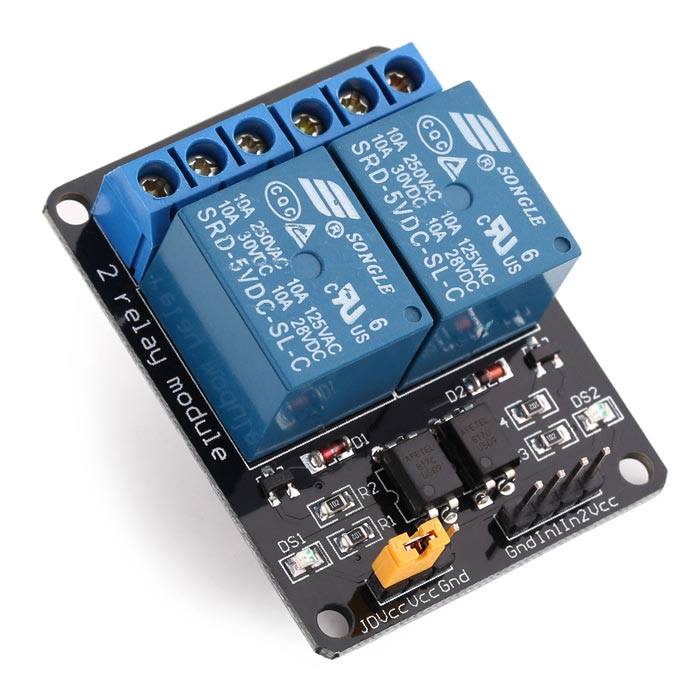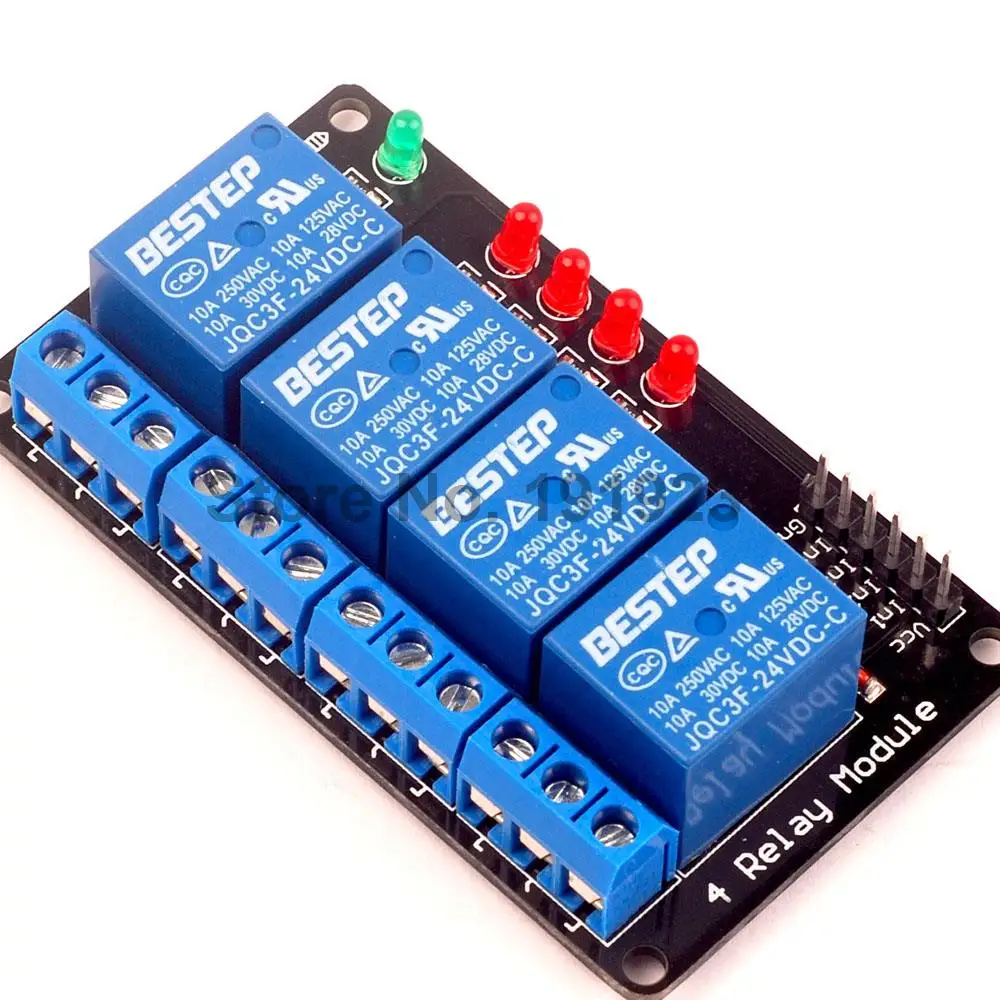

Note that the distance between digital pins 7 and 8 is 160 mil (0.16"), not an even multiple of the 100 mil spacing of the other pins. On the Countdown zero the Relay will turn the light bulb On. a Button (Connected to pin 4) the time on the display will increase by 1second each time, once you set your time, press the other button to start the countdown. Four screw holes allow the Shield to be attached to a surface or case. If you power the Arduino module the LED Display will Show 00:00, if you start pressing. The maximum length and width of the 4 Relays Shield PCB are 2.7 and 2.1 inches respectively. The Shield features four relays, each relay provides 2 pole changeover contacts (NO and NC) in order to increase the current limit of each output the 2 changeover. In the circuit, I have made a voltage divider using 2k and 4.7k resistors to drop down the 5volt logic level to 3.3volt logic level.I have used D4, D5, D6 & D7 pins to control the 4-channel relay module. The Arduino 4 Relays Shield is a solution for driving high power loads that cannot be controlled by Arduinos digital IOs, due to the current and voltage limits of the controller. On the receiving end, I have used Arduino UNO. An alternative to the relay shield is the 4-channel relay module. You can use any 5V DC power supply to supply the circuit.We can use this shield to control high-power devices such as an actuator, pump, LED strip, light bulb, fan. We just need to stack it on Arduino and program for it. Both connect to the same TWI interface to allow you to create a chain of TWI devices. The relay shield has 4 relays that can be individually controlled by Arduino code. 2 TinkerKit TWI: these connectors (4-pin in white) are routed on the Arduino TWI interface.

2 TinkerKit Outputs: OUT5 and OUT6 (in orange), these connectors are routed to the Arduino PWM outputs on pins 5 and 6.2 TinkerKit Inputs: IN2 and IN3 (in white), these connectors are routed to the Arduino A2 and A3 analog input pins.Connecting TinkerKit modules can simplify the creation of a project or a prototype. The relays are controlled by the following Arduino board pins: Relay 1 = Arduino pin 4 Relay 2 = Arduino pin 7 Relay 3 = Arduino pin 8 Relay 4 = Arduino pin 12 The shield features several TinkerKit input/output and communication interfaces. The shield doesn't need external power: it will be provided by the base board, through the 5V and 3.3V pins of the Arduino board used as base.

Single pole chargeover contact maximum 30 V DC 2A
#ARDUINO RELAY PDF#
PDF Descriptionġ40 mA (with all releays on, about 35 mA each) The Arduino 4 Relays Shield is open-source hardware! You can build your own board using the following files:ĮAGLE FILES IN.


 0 kommentar(er)
0 kommentar(er)
